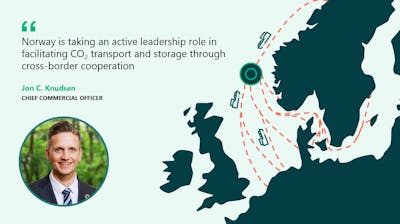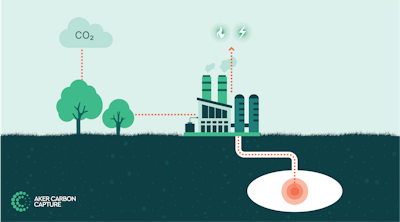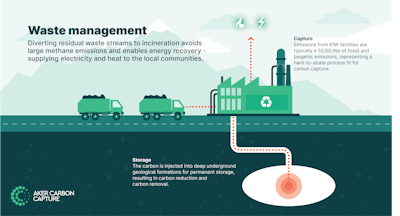Did you know that Aker Carbon Capture has fielded dedicated summer interns for the first time? Get to know the interns that have kept Tech innovating while the rest of the company has enjoyed their vacations.
Meet the team
We, that is, Eskil, Henrik and Øyvind, are three technology and engineering students normally found at Gløshaugen campus at NTNU in Trondheim, all specializing in Nanotechnology. This gives us a broad background in many different fields of engineering, such as design and simulation of electrical components and quantum systems to engineering of novel materials using cutting-edge nano tools, and even learning how to harness the power of biological systems to face the challenges of tomorrow. If there is one thing all these fields depend upon, it is the foundation of data analysis and problem solving, which is the sole reason for which we are here (at least according to our boss)!
At the time of writing, we are on our final day as summer interns, and what better time is there to sit back and reflect upon our experiences as interns at Aker Carbon Capture?

The project
Our task this summer has been, in essence, to build a digital tool to aid the operators and process engineers at the Mobile Test Unit (MTU) in their everyday work. A large part of their job revolves around the collection of operation data, but for this data to be useful, the MTU must first be in a stable operation state. Checking for when stability has been reached after some perturbance, such as tweaking operation parameters, can be a complex task involving time consuming considerations of multiple data streams.
These challenges present an opportunity for new solutions, which is where we enter the picture. We were tasked with developing a program that uses data from the MTU’s many sensors to run an algorithm that gives a measure of the stability of the MTU. To solve this, we first closely consulted the operators and process engineers to understand how stability can be characterized, which sensors are important, and what the most important instabilities to catch are. Once we had a thorough understanding of stability, we immediately started working on implementing our ideas for algorithms. We used existing, tried-and-true stability algorithms as a basis for creating specialized algorithms designed for the specific features of the MTU data and the needs of the domain experts.

This proved to be no piece of cake, but in our darkest hours, the delicious lunch at the office provided by former Bocuse d’or winner chef Charles Tjessem functioned as the coal to the number crushing steam engine, keeping the wheels turning through the summer.
Because the algorithms condense a large amount of data into a small couple of simple outputs (and, if we are frank, also because they were developed by three summer interns without access to live data), we identified the need for the operator to be able to easily validate and understand the hows and whys of the algorithms’ results. We therefore decided to develop a web application that visualizes and contextualizes the algorithm results together with the raw MTU data. During development, we also discovered other needs from the operators, that we then also implemented solutions for. Because of this, the app now simplifies the entire process around taking and logging tests, not only the part about waiting for steady state operations to occur.
So how did we get there?
One of the defining features of our summer internship are the methods for defining, working on, and following up goals and milestones, which we have been doing following the Agile philosophy, also known as the Scrum method. This is a popular method among developers which emphasizes well-defined short-term goals to be achieved during short two-week sprints, making long-term goals more flexible by dividing the work into stories. These stories were then subtasked in excruciating detail, down to the estimated time spent on each and every subtask. This meant that there were little-to-no blockades of not knowing what to do, hindering progress; if you’ve finished a task or hit a roadblock, you could easily jump to another just-as-important task in the backlog. At the end of each sprint, the progress was presented to the end user to identify potential holes and needs early on, allowing us to tailor the end product on an as-we-go basis.
The application has been completed and handed over to the ACC operators and data scientists. The MTU is currently not in operation, but will soon be heading north to Mo i Rana where it will capture carbon from a chemical production facility. We are looking forward to seeing the application be put to use, and we are excited to follow how the operators and engineers will benefit from the application we have spent the last weeks making. All things considered, it has been an exciting and interesting summer as an Intern at Aker Carbon Capture’s technology department, and a real pleasure to get to know all the amazing people at this firm. A special thanks goes to our supervisor Simen Ringdahl, who made the whole project possible, quite literally.



